Silvertone 1448 Guitar & Amp (3/3)
This circuit is commonly known as an "All-American 5", because in a table radio it used 5 tubes. The radio used two tubes, the power supply used one, and the amplifier used two. Here, minus the two radio tubes, the 12AU6 tube is used as a pre-amp, the 50C5 tube is the power amp, and the 35W4 serves as a half-wave rectifier. There were many variations of the 5-tube design, but they all had two features in common: they did not use a power transformer, and they used a "floating ground" design that would be totally unacceptable today.
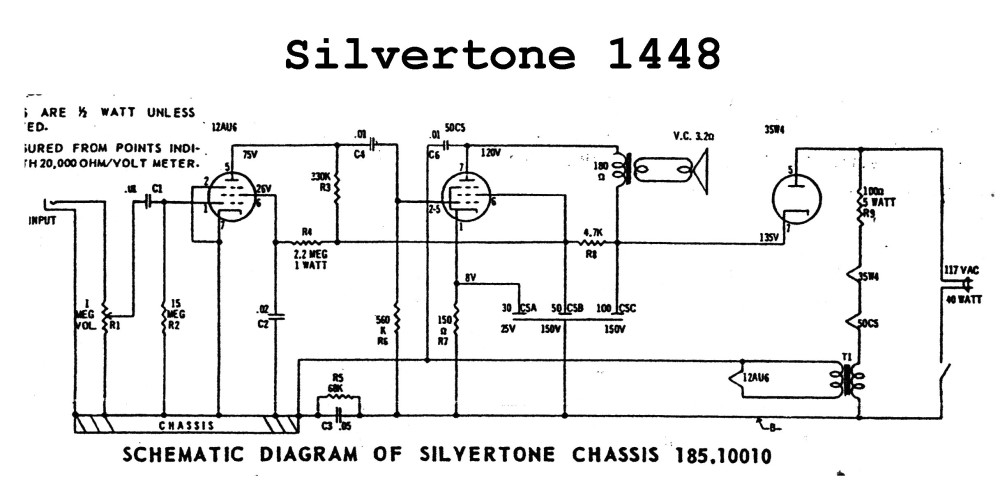
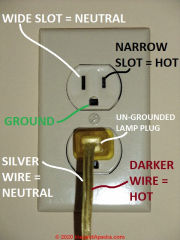
In the diagram above, you can see 75v coming off the first tube, 120v coming off the second, and 135v coming off the power supply. That's not nearly as bad as most 'real' guitar amps. But study the diagram: the power comes in at the right, and connects through the switch to the 'chassis'. The input jack also connects to the 'chassis', which means that, depending on the orientation of the power plug, you could have wall current going straight down the guitar cord!
Old two-blade power plugs are not polarized either - the blades are the same width, not like today. You plug it in, and if it is noisy, pull it out, flip it over, and put it back, and hopefully it will be quieter. So you could very easily be in a situation where you have line voltage on the guitar cord ( or microphone cord. ) Classic Danelectro guitars did not have bridge grounds for safety reasons.
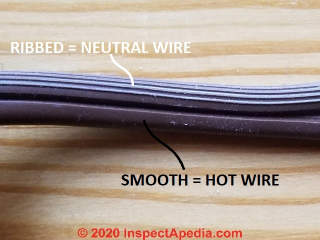
There is a simple way to make an old unpolarized power cord safer. First, figure out which side of the cord is neutral - that will be the side with ridges on it. That will tell you which of the blades should be neutral, which on a modern plug is the wide one. Now take a pair of dykes ( no snickering ) and split that blade lengthwise. If it has a hole, split it up to the hole, otherwise a quarter inch will do. The two sides will naturally spread apart, and you will have a polarized plug. Of course, now you lose the option of flipping it over, but if your wall wiring is correct, you won't need to.
These inexpensive modifications and precautions make this amp much safer, but not completely safe. For that, you would have to install an isolating transformer, chassis ground, and a modern three-pronged power cord, which is more than this little amp is worth. Even then, it would not be completely safe.
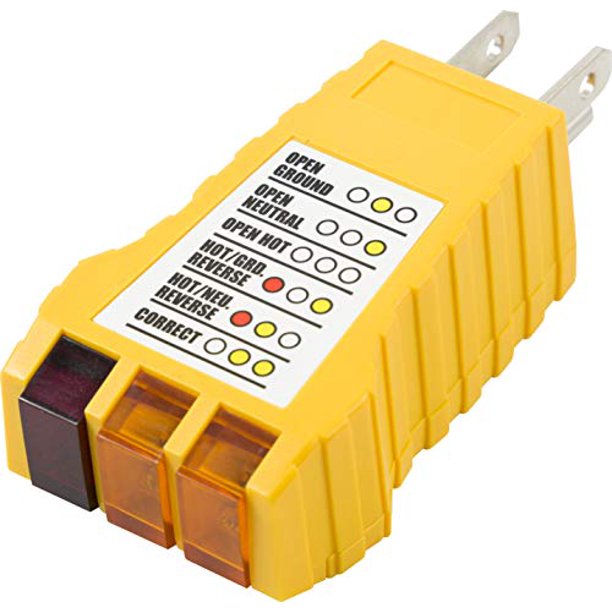
https://robrobinette.com/Widowmakers.htm
Disclaimer:
I am not an electrician, technician, or electrical engineer. I am just someone who is not afraid to mess around with things, and I have half a brain. If you electrocute yourself, it's not my fault!




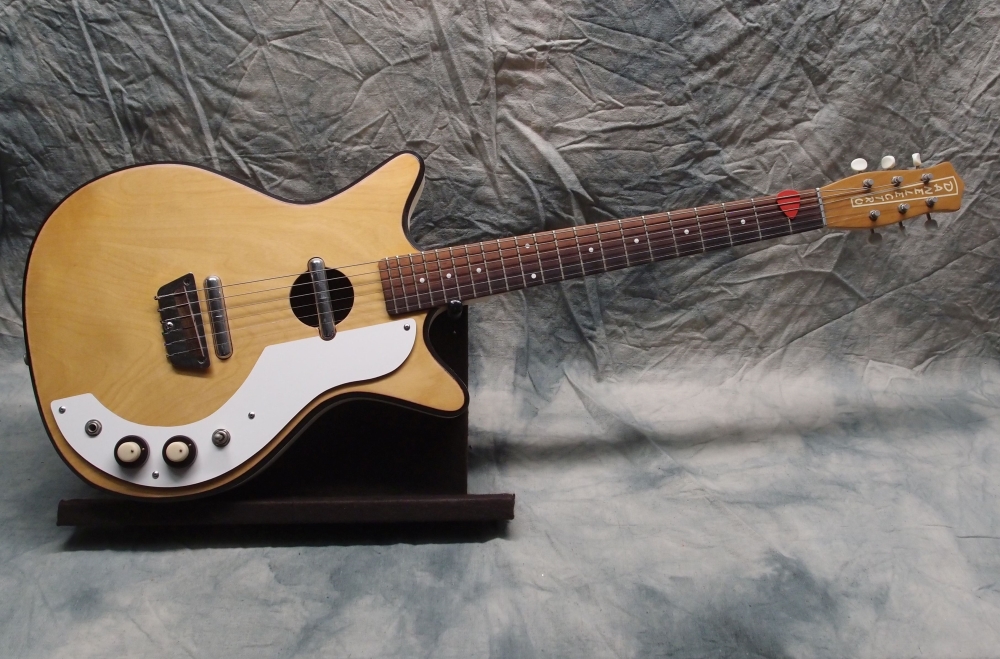
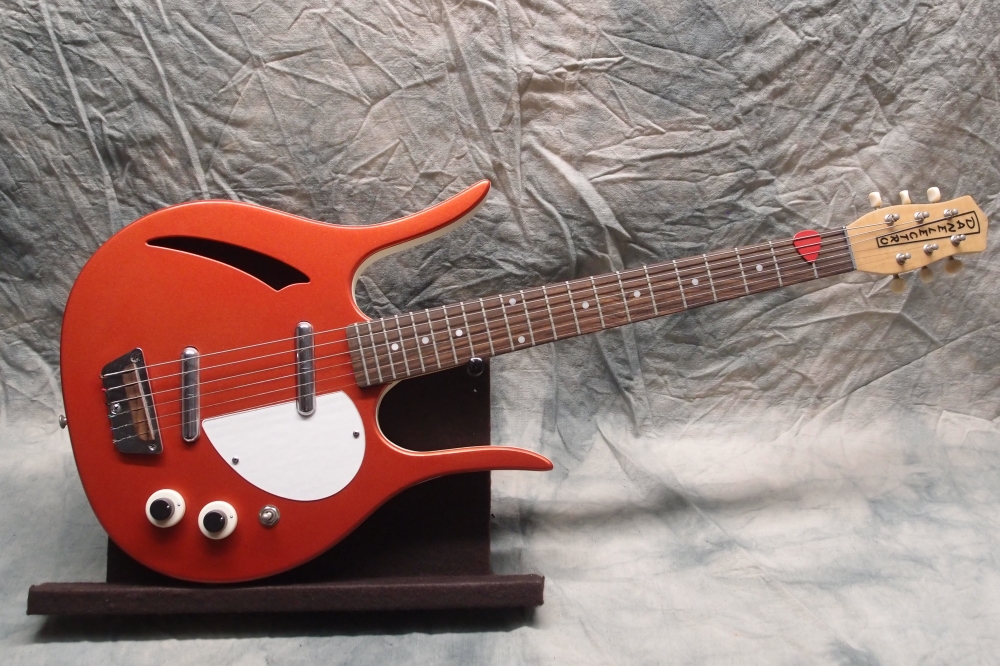
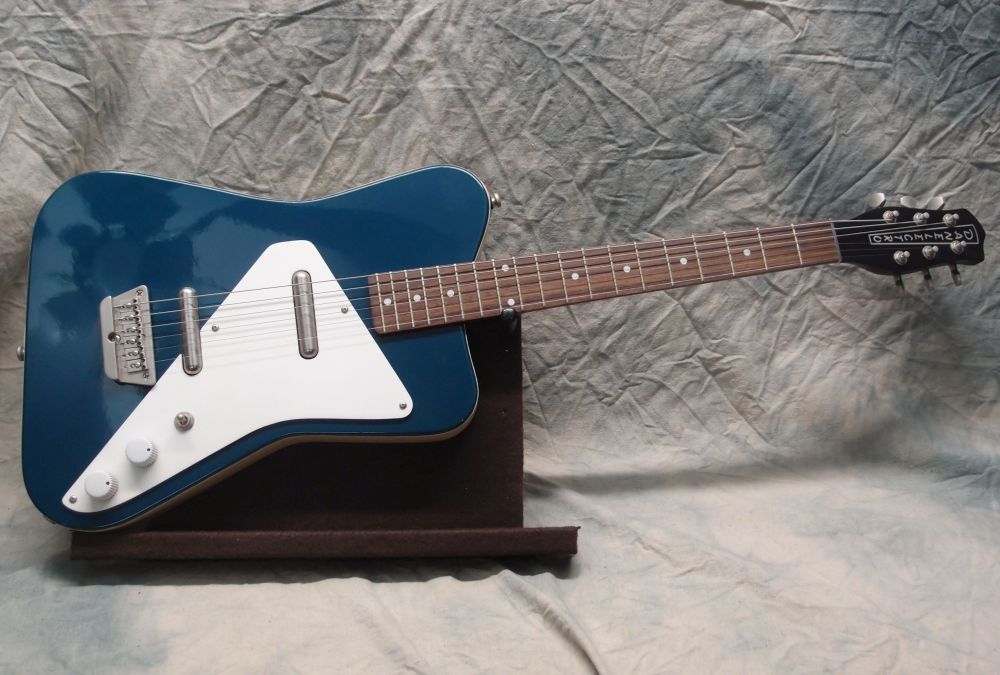

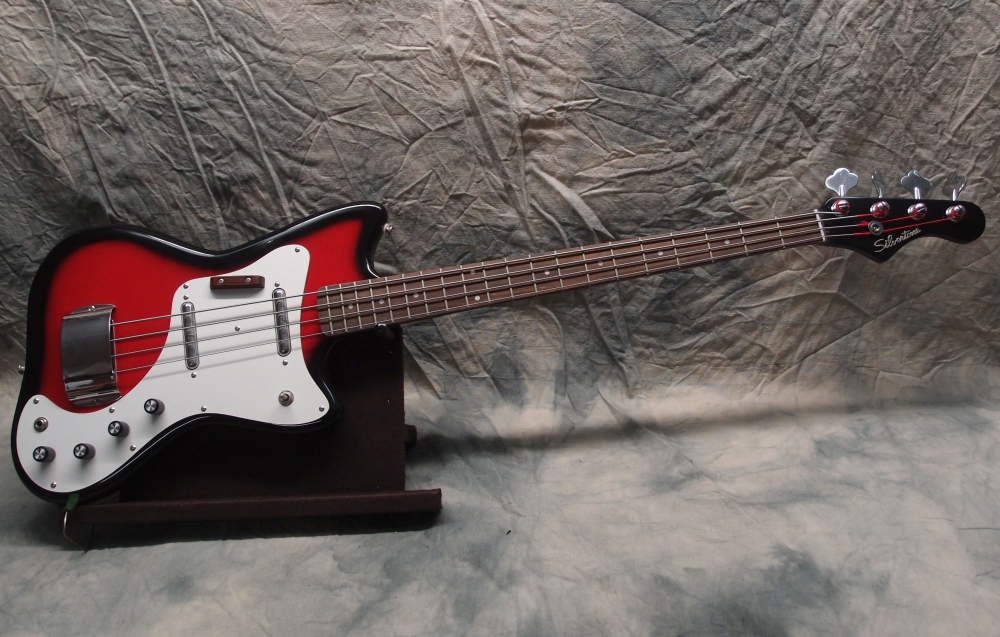
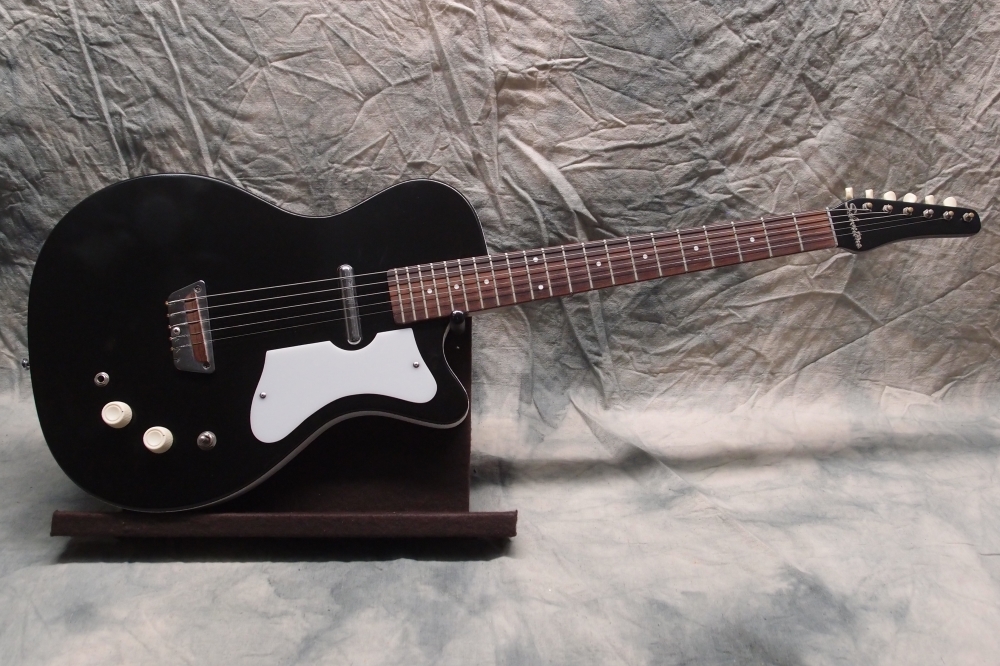
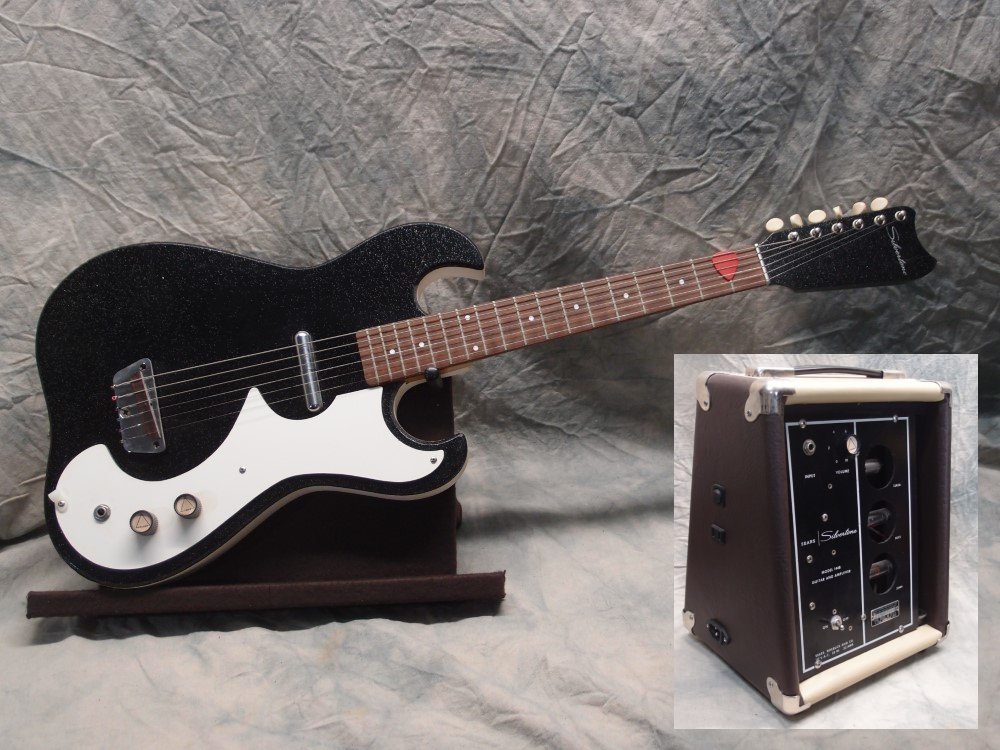
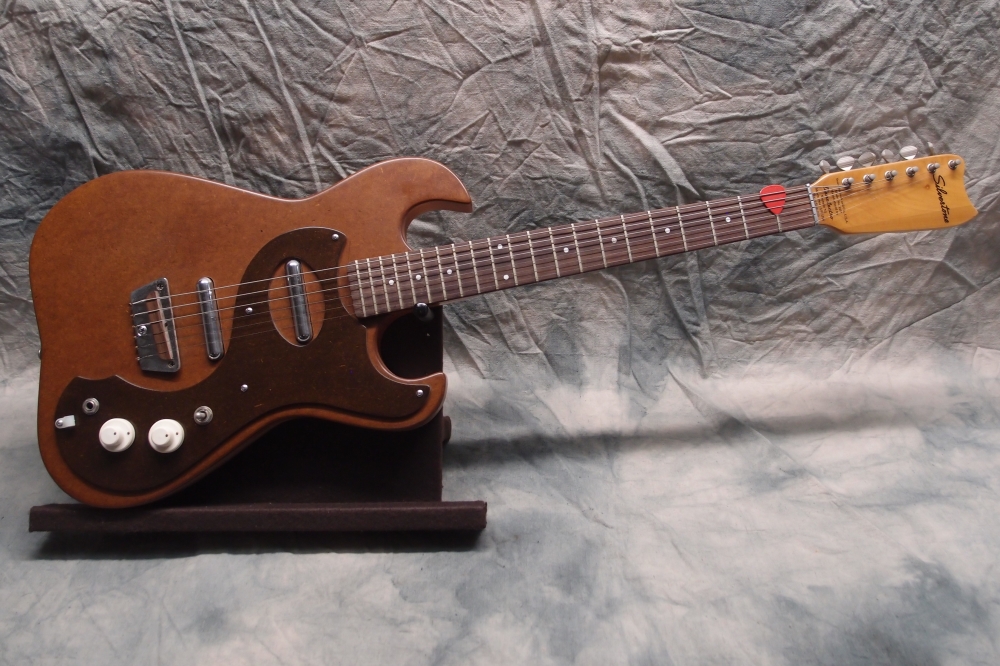
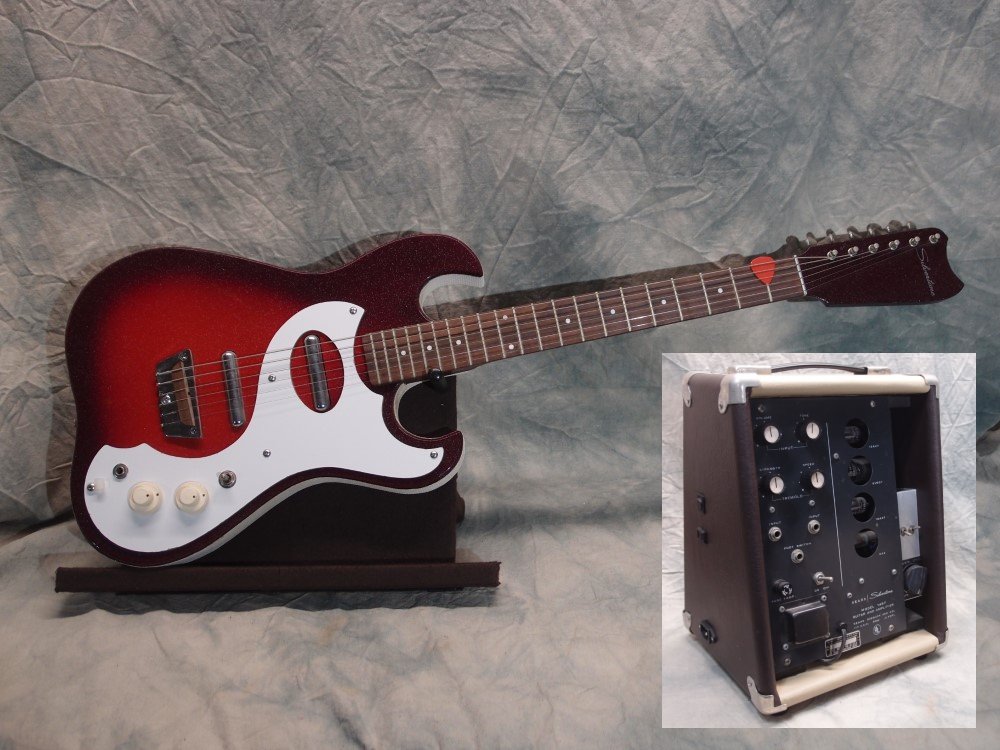

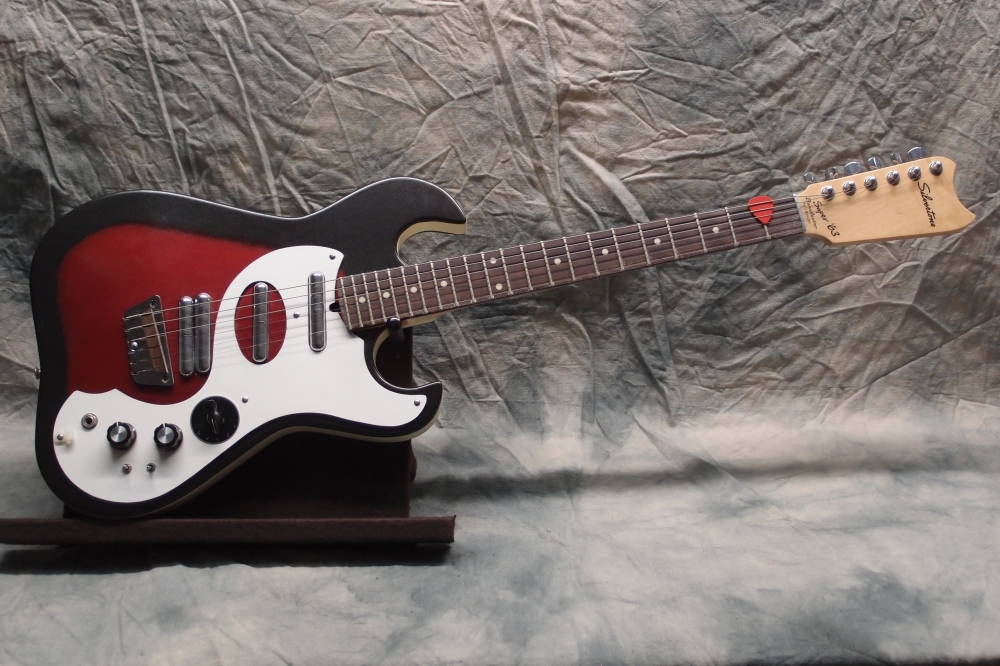
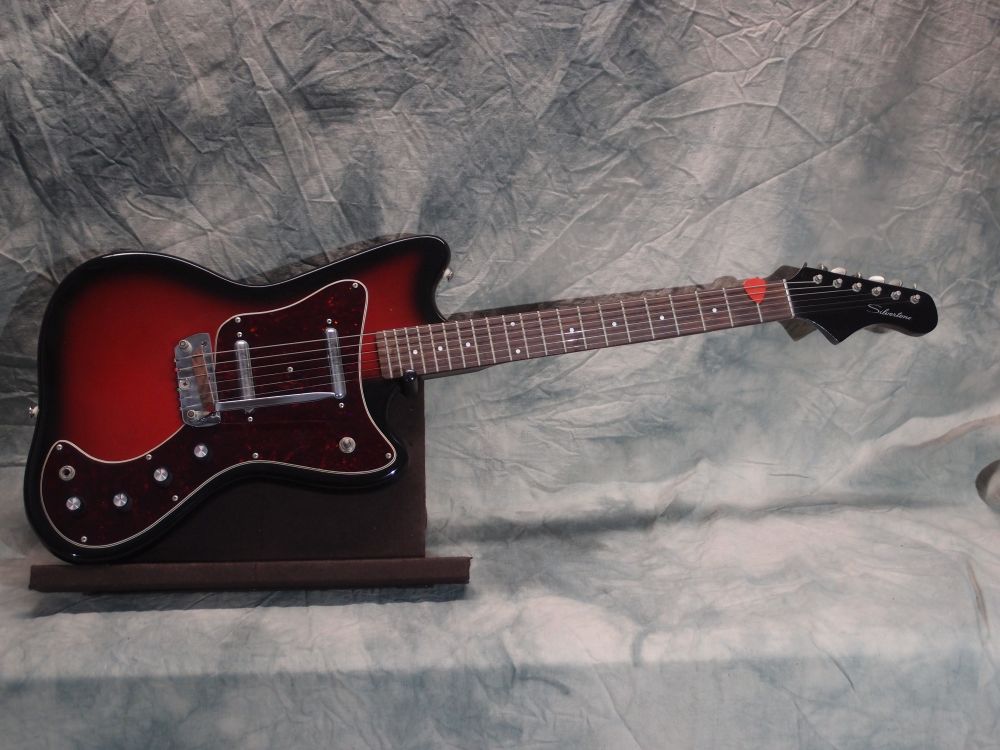
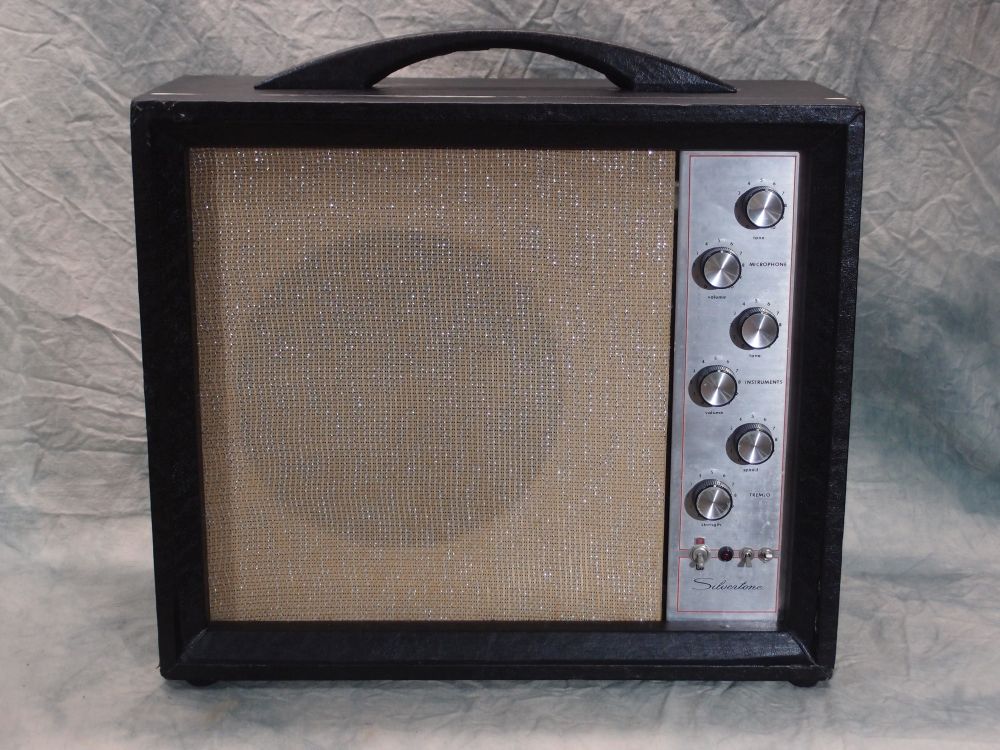

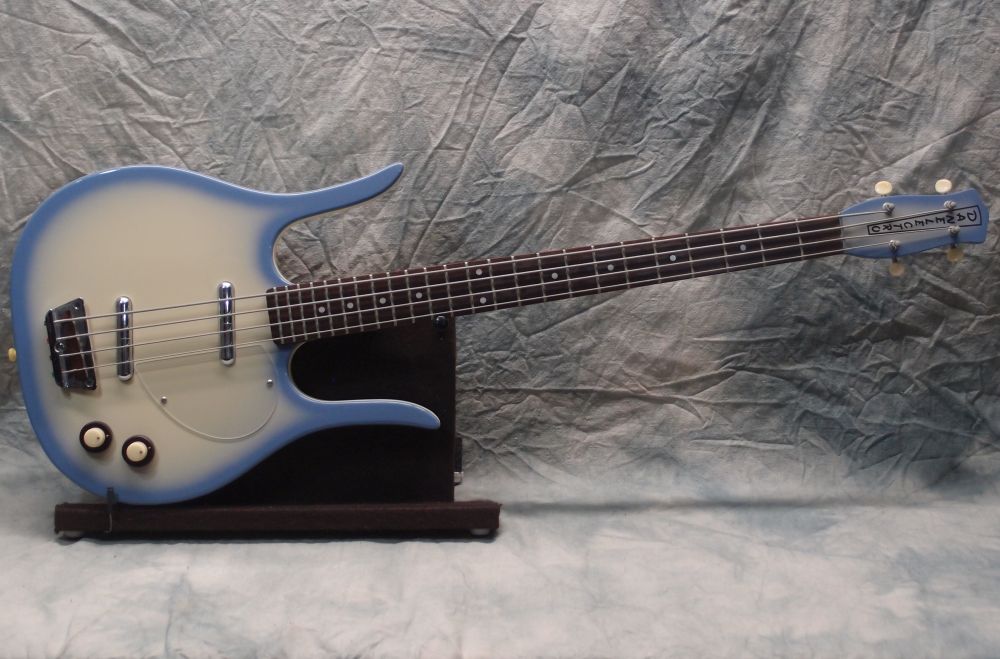
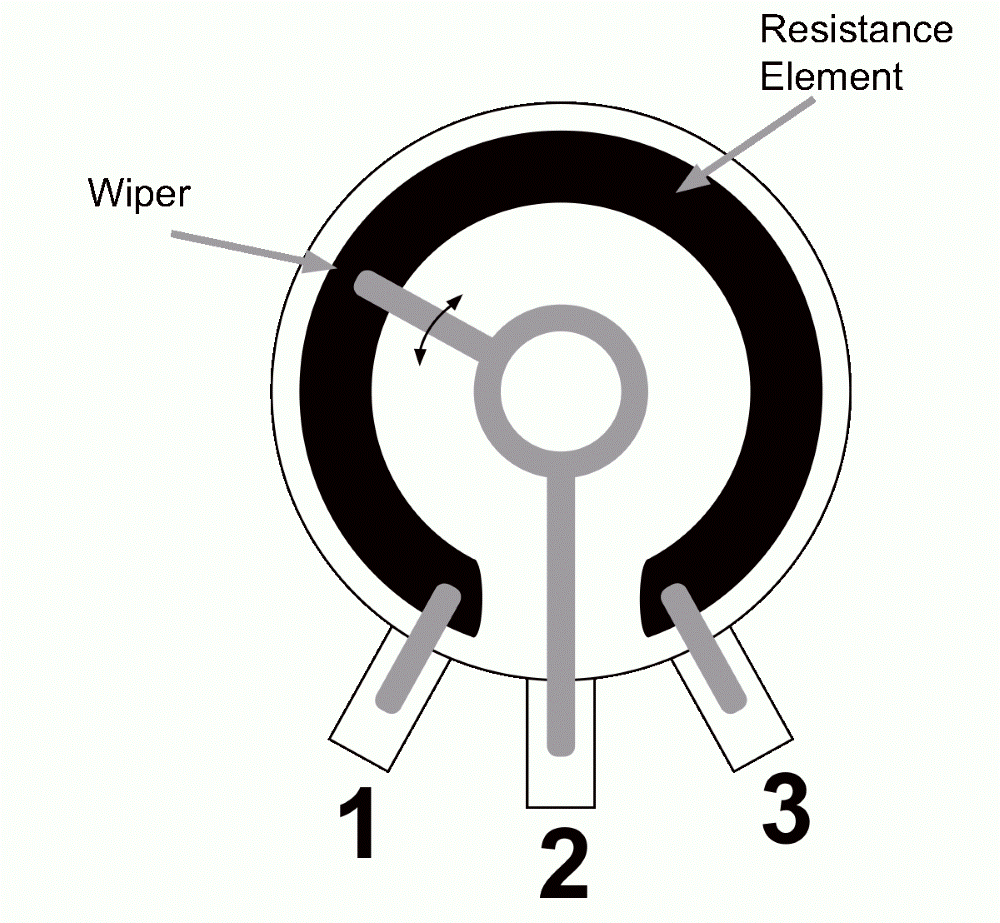
Questions or Inquiries?
Just want to say Hello? Sign the .